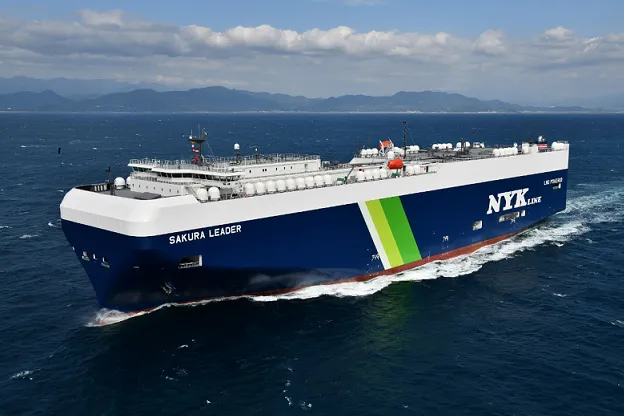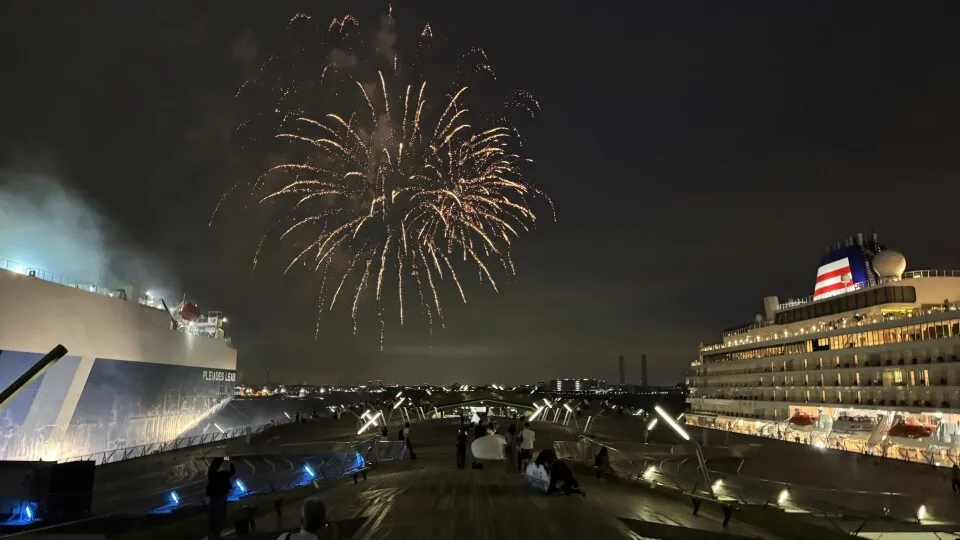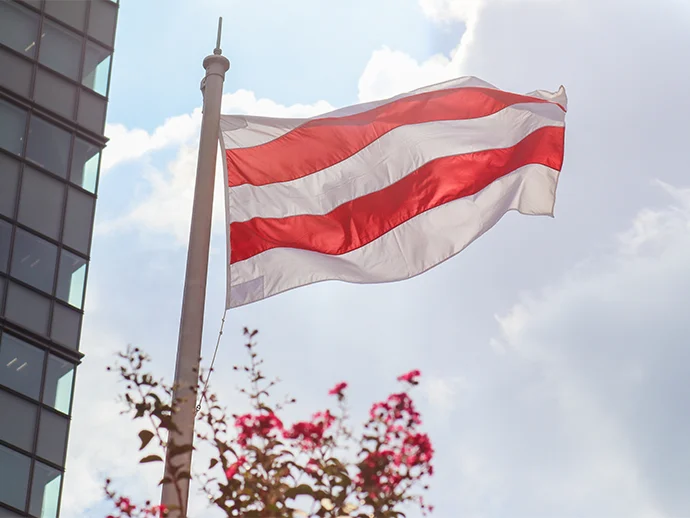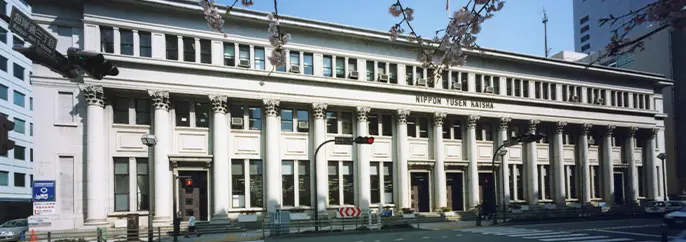NYK Collection: VLCCs – The Giant Tankers Transporting Crude Oil
Released : Aug. 22, 2025
Updated : Oct. 20, 2025
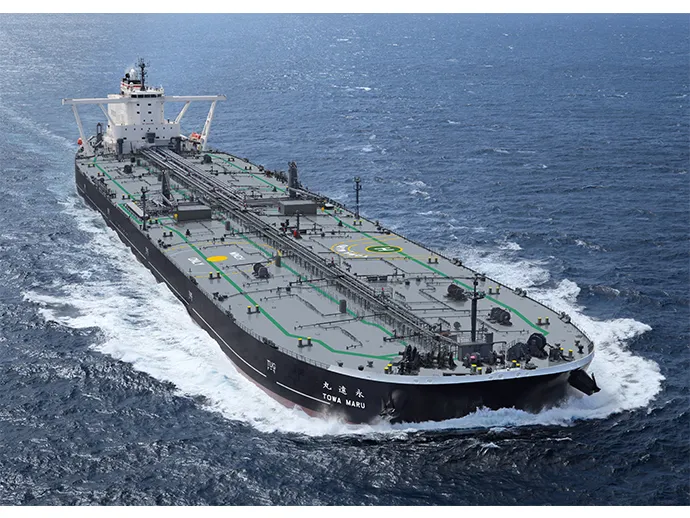
“Bringing value to life.” ── This corporate philosophy of NYK Line is embodied by the many types of vessels that traverse the oceans daily, delivering value across the seas. In this series, “NYK Collection,” we’ll take a closer, more accessible look at the various vessel types that sustain people’s lives and the global economy.
From Oil-Producing Countries to Japan: Contributing to a Stable Petroleum Supply
Achieving a decarbonized society is an urgent issue. While various efforts, such as energy conservation and adopting renewable energy, are being made, many sectors still depend heavily on fossil fuels, emitting carbon dioxide. Petroleum is an indispensable resource in our daily lives, not only as fuel for power generation, transportation, and home heating but also as a raw material for plastics and synthetic fibers.
Japan relies on overseas imports for most of its petroleum, with over 90% of crude oil coming from the Middle East. Ensuring a stable petroleum supply requires safe and efficient transportation methods, and VLCCs play a crucial role in this process.
“VLCC” stands for “Very Large Crude Oil Carrier,” precisely what its name implies — a massive vessel designed to transport crude oil.
To grasp the scale of VLCCs, let’s explore the different sizes of crude oil tankers. Starting from the smaller types, we have “Handymax” vessels, which have a deadweight tonnage (DWT) of 35,000 to 45,000 tons. This relatively small size allows them to easily enter and exit many ports worldwide. Next is the "Panamax" category, with a capacity of 55,000 to 80,000 DWT, designed to be the maximum size that can pass through the Panama Canal. Following that is the "Aframax," with a capacity of 80,000 to 120,000 DWT. It derives its name from the AFRA freight rate index. Afterward comes the "Suezmax," which has a 120,000 to 200,000 DWT capacity and represents the largest size that can transit through the Suez Canal. Finally, we have the VLCC, which was first introduced in the 1960s and ranges from 200,000 to 300,000 DWT.
Until the 1970s, even larger tankers, known as ULCCs (Ultra Large Crude Oil Carriers), with capacities of 500,000 tons, were used. However, since the oil crisis, VLCCs have become the primary vessels for transporting crude oil to Japan.
There are specific reasons why VLCCs continue to be used.
The most efficient maritime route between the Middle East and Japan passes through the Strait of Malacca and the Singapore Strait. However, parts of this route have shallow waters, with depths of just over 20 meters, making it risky for ULCCs to navigate. Therefore, ULCCs with a capacity of 500,000 tons cannot pass through this route. Taking a detour would require an additional three days, and the extra cost could reach tens of millions of yen. Meanwhile, VLCCs can safely navigate this shortest route.
As of 2025, NYK operates 22 VLCCs, including spot charters (vessels contracted on a per-voyage basis).
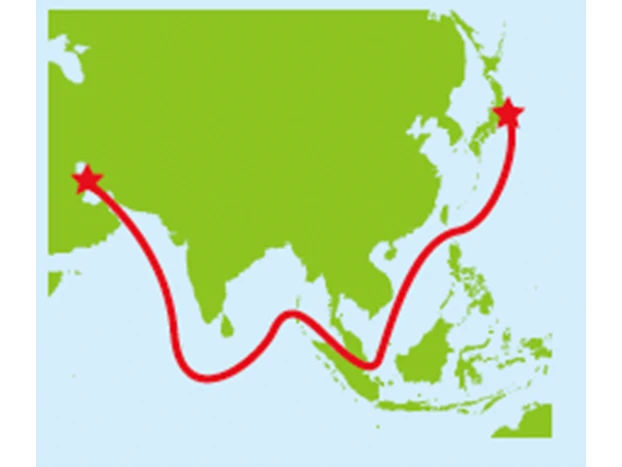
Major Route from the Middle East and the Persian Gulf to Japan
Managing Crude Oil Safely and Precisely in the Cargo Tanks
Let’s delve deeper into VLCCs, starting with their immense size.
The 300,000 DWT class VLCCs operated by NYK are approximately 340 meters long. To put that into perspective, that’s about the same length as Tokyo Tower laid on its side! They are over 100 meters longer than a modern cruise ship, such as Asuka III, which measures 230 meters. From the bottom of the hull to the top of the deck structure, the height exceeds 60 meters, equivalent to a 20-story building.
The deck of a VLCC is mostly clear, with visible pipes and fittings. Crude oil is stored and transported in tanks within the hull. A typical VLCC is equipped with 17 cargo oil tanks. The chief officer, responsible for loading operations, manages the types and quantities of crude oil in each tank.
Crude oil varies in density, sulfur content, and other properties depending on the oil field where it is produced. There are approximately 300 types of crude oil, and some cannot be mixed during transportation due to their potential negative impact on refining processes. As a result, crude oil must be transported separately in different cargo tanks based on its characteristics.
Additionally, in the event of an accident, the environmental impact of an oil spill would be catastrophic. To mitigate this risk, VLCC hulls are designed with double structures. The outer layer of the cargo oil tanks is surrounded by ballast water tanks, which hold thousands of tons of seawater to stabilize the vessel. This double-hull design acts as a safeguard to prevent oil spills.
During loading operations (transferring crude oil from land to the vessel), the manifold (the connection point between the vessel and the shore) located in the central part of the vessel is connected to an onshore pipeline. The crude oil sent from the shore is monitored in the cargo control room using remote-level gauges. Finally, an ullage measurement tool (UTI gauge) is inserted into the ullage hole (an opening for measuring the distance between the liquid level and the tank ceiling) to ensure the tank is filled to the target level.
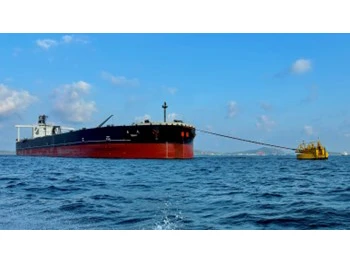
VLCC Tenki During Crude Oil Loading Operations
When the VLCC arrives in Japan, unloading operations (transferring oil from the vessel to land) are carried out. During this process, the cargo pumps on board the vessel transfer the crude oil to the shore. However, continuously unloading crude oil reduces the pressure in the cargo tanks, which can cause the tanks to buckle (similar to how a juice carton collapses when you drink through a straw).
To prevent this, inert gas (non-reactive gas) generated from the combustion gases of the boiler* is sent into the tanks. This inert gas maintains appropriate pressure inside the tanks.
* Boiler: A device that burns fuel to boil water and generate steam. On crude oil tankers, the steam produced by the boiler is used to drive the cargo pumps.
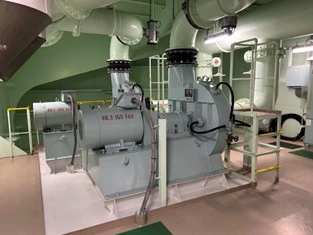
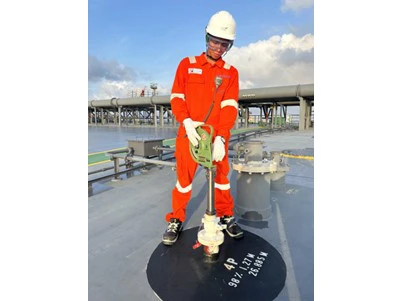
Ullage hole (an opening used to measure the ullage, i.e., the distance from the liquid surface to the top of the tank) and UTI gauge (a special tape-type instrument inserted into the gauge tube)
A Single VLCC Can Transport "Half a Day's Worth" of Japan's Oil Consumption
The journey begins in Japan, passes through the Malacca and Singapore Straits, loads crude oil in oil-producing countries in the Persian Gulf, such as Saudi Arabia and Qatar, and returns to Japan. This round trip, including loading and unloading, takes about 50 days.
The appearance of the VLCC differs significantly between its outbound and inbound journeys. On the outbound journey, the tanks are empty, and the draft (the distance from the waterline to the bottom of the vessel) is approximately 11 meters. However, when fully loaded with crude oil, the draft increases to about 20 meters. The difference in the vessel’s appearance is striking, as shown in the photos.
A single VLCC can carry approximately 300,000 to 320,000 tons of crude oil per voyage. This amount corresponds to "half a day’s worth" of Japan’s total petroleum consumption. The fact that a single VLCC can transport such a vast quantity highlights its remarkable scale.
In Japan, it is estimated that each person consumes an average of 5.8 liters of petroleum daily. This heavy dependence on petroleum is likely to surprise many. The daily operations of VLCCs are, in a way, our lifeline. Without the crude oil transported over long voyages, our daily lives as we know them would not be possible.
draft.webp)
_draft.webp)
NYK’s Commitment to Reducing Environmental Impact Includes VLCCs
NYK is committed to reducing environmental impact, and VLCCs are no exception.
VLCCs run on bunker fuel. Even with advancements in engine performance, a round trip between Japan and the Middle East consumes the equivalent of 11,000 drums of bunker fuel.
To address this, NYK began long-term trial voyages using biofuels on the VLCC Tenjun in May 2024. Fuel was bunkered in Singapore, and during approximately three months of continuous operation, a comprehensive assessment was conducted on the long-term use of biofuel, focusing on its operational safety, reliability, and supply chain stability.
For biofuels, derived from used cooking oil and biogenic organic resources, the carbon dioxide emissions during combustion are considered to be effectively zero. Biofuels can also be used in existing bunker fuel engines, making them a promising option for transitioning to zero-emission fuels.
As of now, after conducting verifications regarding the safety of onboard engines and fuel supply, as well as the stability of operations, we have carried out a cumulative total of over 400 biofuel (such as B24 and B30) refuelings on our operating vessels by the end of June 2025. Moving forward, we plan to further increase the blending ratios of biofuels to strengthen our efforts in reducing greenhouse gas emissions.
Additionally, NYK is collaborating with shipyards and charterers to develop Japan’s first methanol dual-fuel VLCC. The new vessel, scheduled for completion in 2028, is expected to be a groundbreaking innovation.
This vessel is designed to reduce carbon dioxide emissions by approximately 40% compared to existing standards. The use of environmentally friendly bio-methanol and synthetic methanol is also being considered.
While fulfilling the vital role of transporting crude oil, we are taking steps, one at a time, to protect the global environment. The collective efforts of those involved in these massive vessels are paving the way for a sustainable future.
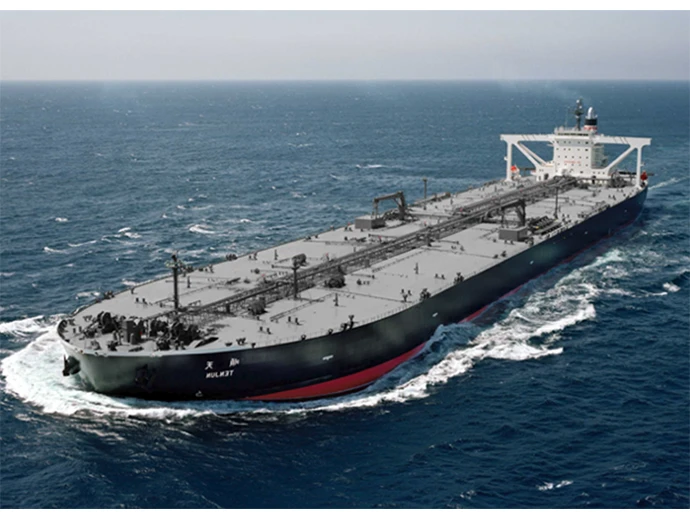
VLCC Tenjun During Biofuel Trial Voyage
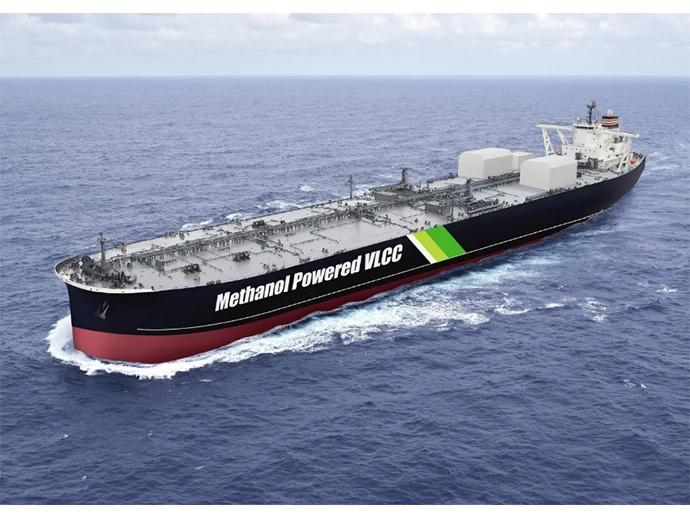
Concept Design of Next-Generation Eco-Friendly VLCC
